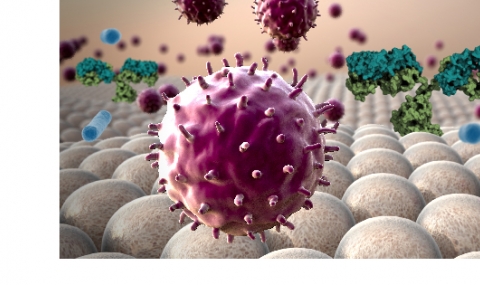
Innate immunity host defense anti-microbial peptides
All organisms produce a large repertoire of gene-encoded cationic antimicrobial peptides (AMPs), which serve to protect the host from microbial invasion. Most of these molecules directly kill bacteria by targeting and perforating the negatively charged membrane of the pathogen. In light of a worldwide emergence of drug-resistance bacterial pathogens, AMPs are promising therapeutic candidates.





